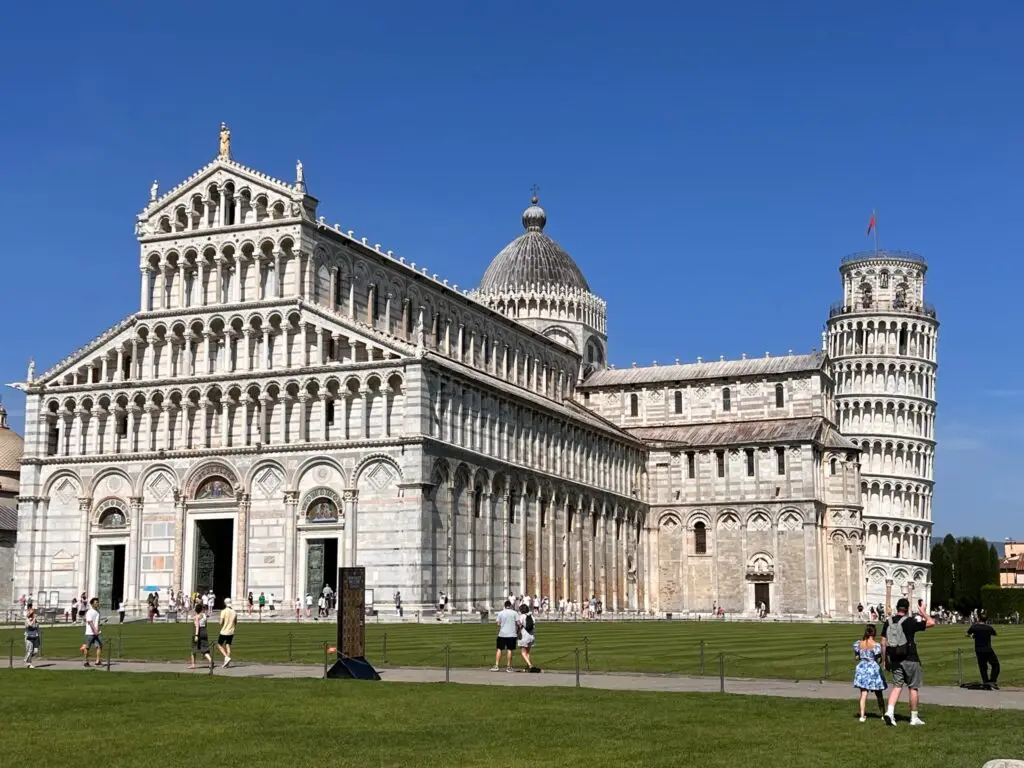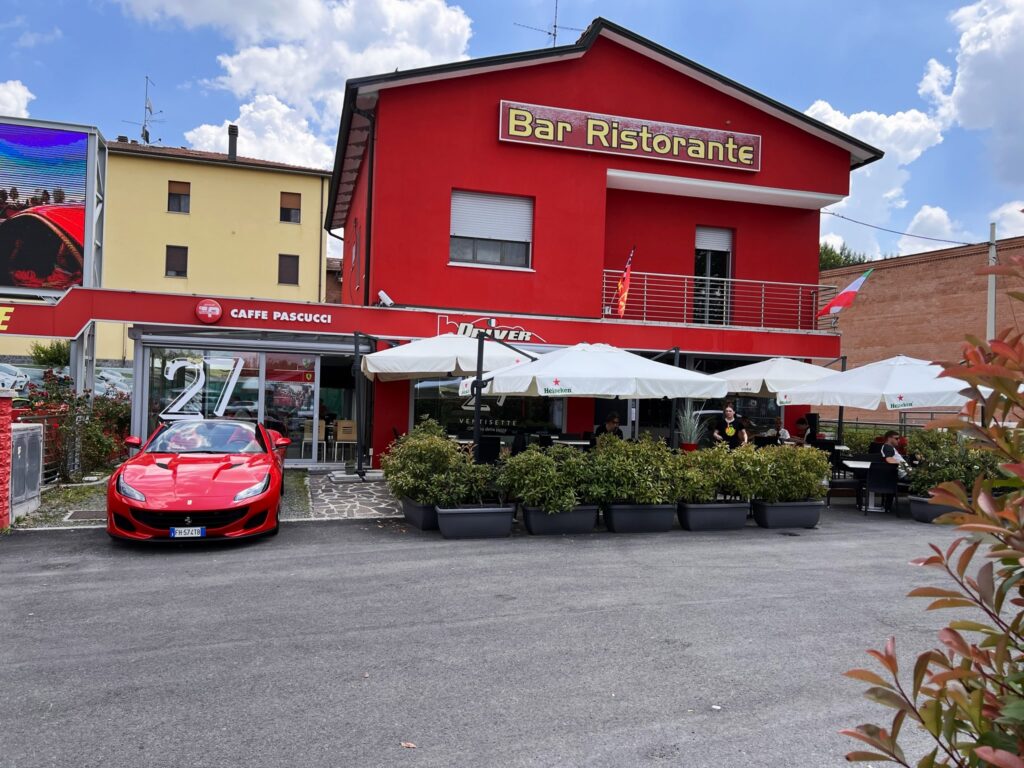
2024 Travel Reflections and 2025 Adventure Goals
2024 Travel Reflections – A Year of Adventure, Flavor, and Leisure with Pure Life Podcast As 2024 draws to a
Italy is a land of unparalleled beauty and rich heritage, offering a captivating blend of history, art, and cuisine. From the iconic canals of Venice and the ancient ruins of Rome to the Renaissance treasures of Florence, each city tells its own unique story. Beyond the cities, Italy’s famed wine country, including the rolling vineyards of Tuscany and the picturesque hills of Piedmont, invites you to savor world-class wines and breathtaking landscapes. Whether you’re exploring the stunning Amalfi Coast, discovering the charm of Cinque Terre, or indulging in authentic Italian cuisine, Italy promises unforgettable experiences at every turn.




Italy is a country that enchants visitors with its rich history, stunning architecture, world-renowned cuisine, and breathtaking landscapes. From the art-filled streets of Florence and the ancient ruins of Rome to the romantic canals of Venice and the rolling hills of Tuscany, Italy offers a diverse range of experiences that appeal to every kind of traveler. Whether you’re exploring its vibrant cities, savoring local wines in the countryside, or relaxing on the Amalfi Coast, Italy promises unforgettable moments and a warm, welcoming culture.
Language: The official language of Italy is Italian, and while many people in tourist areas and major cities like Rome, Florence, and Milan speak English, knowing a few basic Italian phrases can greatly enhance your experience. Greetings like “buongiorno” (good morning), “per favore” (please), and “grazie” (thank you) are appreciated by locals and can help you navigate daily interactions more smoothly. In smaller towns and rural areas, English may be less common, so it’s helpful to have a translation app or phrasebook on hand.
Currency: Italy uses the Euro (EUR) as its official currency. Credit and debit cards are widely accepted throughout the country, especially in hotels, restaurants, and shops. However, it’s always a good idea to carry some cash, especially for small purchases, local markets, or in remote areas where card payment might not be available. ATMs are plentiful in cities and towns, making it easy to withdraw euros as needed. The exchange rate typically fluctuates around 1 EUR to 1.1 USD, but it’s advisable to check the current rate before your trip. Currency exchange services are available at airports, banks, and exchange offices for those who need to exchange foreign currency.
Climate: Italy experiences a varied climate, with different weather patterns in the north, central, and southern regions. Generally, the country enjoys four distinct seasons:
The best time to visit Italy is during the spring (April to June) and autumn (September to October), when the weather is mild and pleasant, and the tourist crowds are thinner than during the peak summer months. These seasons offer the perfect conditions for enjoying Italy’s rich history, scenic beauty, and vibrant culture.
Italy offers a variety of convenient and efficient transportation options, making it easy for visitors to explore its iconic cities, charming countryside, and picturesque coastal regions. From high-speed trains to local buses, here’s how to navigate Italy’s diverse landscapes with ease.
Trains: Italy’s extensive train network is one of the best ways to travel between cities and regions. The high-speed Trenitalia and Italo trains connect major destinations like Rome, Florence, Venice, and Milan, offering fast, comfortable, and scenic journeys. Regional trains cover smaller towns and rural areas, making it easy to explore the entire country. Tickets can be booked online in advance or at train stations, and for the best deals, consider purchasing tickets early. Trains are reliable, with frequent departures, and are a preferred mode of travel for both locals and tourists.
Buses: For areas not served by trains, buses provide a reliable and economical way to get around. Long-distance bus companies like FlixBus offer routes between cities and towns, while local buses connect smaller villages and rural areas. In cities, buses are a convenient way to reach attractions not accessible by metro or tram. Tickets can be bought at stations, kiosks, or online. Keep in mind that in some rural areas, bus schedules may be less frequent, so it’s best to plan ahead.
Metro and Trams: Major cities like Rome, Milan, and Naples have efficient metro systems that make it easy to navigate urban areas quickly. The metro is a fast and affordable way to visit key attractions, especially in Rome, where it connects to major sites like the Colosseum and Vatican City. Trams are another convenient option in cities such as Milan and Turin, offering a scenic way to explore the city. Tickets are available at metro stations, newsstands, and online, and can often be used interchangeably on metros, trams, and buses within the same city.
Taxis and Ride-Hailing: Taxis are widely available in cities and towns across Italy. Licensed taxis are typically white and metered, but it’s advisable to confirm the fare or use a meter before starting your journey. Ride-hailing services like Uber are available in some cities, though their presence is more limited compared to taxis. In smaller towns, it’s best to book a taxi in advance or use local services for a reliable ride. Taxis and ride-hailing apps are especially useful for short distances or when traveling with luggage.
Car Rentals: Renting a car is a great option for travelers looking to explore Italy’s countryside, coastal areas, and smaller villages at their own pace. Major rental companies operate in airports and cities, offering a range of vehicles to suit different needs. Driving in Italy can be an adventure, with narrow streets and busy traffic in cities, but it’s an excellent way to visit off-the-beaten-path destinations like Tuscany’s hill towns or the Amalfi Coast. Be sure to check local driving regulations, and note that an International Driving Permit (IDP) may be required for non-EU travelers.
Bikes and Scooters: For a more leisurely way to explore, consider renting a bike or scooter, especially in bike-friendly cities like Florence and Bologna. Many towns offer bike-sharing services, and scooters are popular for navigating through narrow streets and busy urban areas. It’s an eco-friendly and enjoyable way to experience Italy’s vibrant city life or scenic countryside.
Domestic Flights: For long-distance travel or reaching islands like Sicily and Sardinia, domestic flights are a quick and convenient option. Major airlines like Alitalia, Ryanair, and EasyJet connect cities across the country, with frequent flights and competitive fares. Airports are well-connected to city centers by public transportation or shuttle services, making air travel a practical choice for covering large distances in a short time.







2024 Travel Reflections – A Year of Adventure, Flavor, and Leisure with Pure Life Podcast As 2024 draws to a

Exploring the Rich History and Iconic Landmarks of Pisa Italy Pisa Italy, known worldwide for its iconic Leaning Tower, is

Culinary and Cultural Gem: Perugia Italy Perugia, the capital of Italy’s Umbria region, is a hilltop city known for its

Cortona Italy day trip itinerary Perched atop a hill in the stunning Tuscan countryside, Cortona is a charming town known

Bologna Italy – Top Places to See, Stay and Eat Bologna Italy, often called La Dotta, La Grassa, La Rossa

Explore Modena’s Legendary Supercar Museums Just a short drive from the city center of Modena Italy, you’ll find a paradise